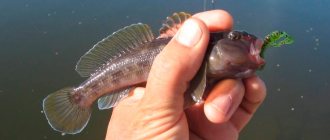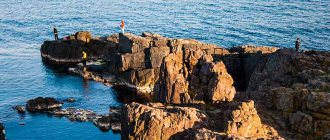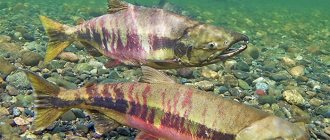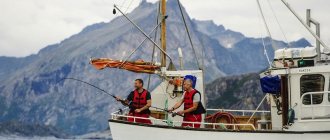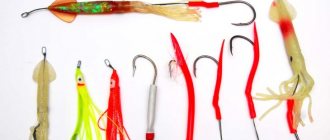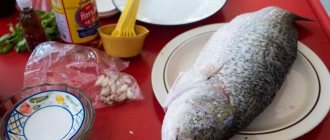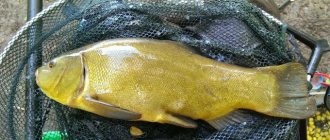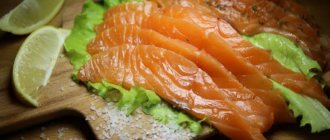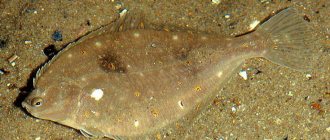Flounder is considered one of the most valuable and sought after fish in the fishing industry. Flounder spends most of its life at the bottom, so hunting for it has a specific process.
The result of fishing directly depends on the equipment of the fisherman and how correctly the gear is selected. Before hunting for such a specimen, you should know some features and nuances.
Peculiarities of flounder behavior
Flounders are predators and, despite their unique body, are able to move quickly and agilely. Fish live throughout Eurasia, as well as in inland seas.
The Pacific and Arctic Oceans are especially rich in flounder fish. Some species can be found in the Black, Azov and Caspian Seas.
These fish spend their lives alone, masterfully camouflaging themselves to match the color of their surroundings. Flounder are characterized by passive behavior; they often bury themselves in the bottom and wait for prey. The ability to camouflage is necessary for fish not only for hunting, but also for hiding from predators.
Note! In its normal state, flounder moves slowly along the bottom, but if necessary, it can develop greater speed using wave-like movements. If it wants to catch prey, the flounder can shoot from the shelter in the required direction.
Flounder coloring page
The color of flounders depends on their place of residence; the photographs below show the camouflages of flounders, which are very similar to the structure of the bottom. There is even some information that scientists, for experimental purposes, placed flounder on a checkered bottom, and over time, the same cells as on the bottom appeared on the skin of the flounder. This is very surprising.
Another interesting fact about flounders: flounders are born with eyes on both sides of the body, but as they age, one eye moves to the other side.
What to catch flounder with - bait
Animal bait
Flounder is a predator, so it bites on many different types of bait. It is not particularly picky about food, so it does not require special searches or significant costs for bait.
Mainly used:
- shellfish meat;
- shrimp;
- worms;
- parts of crab and squid;
- pieces of fish;
- small crustaceans;
- mussels;
- anchovies and small gobies.
The advantage of flounder is that it bites on anything that moves, which makes it much easier to prepare for fishing.
Artificial baits
Artificial baits are also widely used when hunting this fish. Fans of spinning fishing actively use weighted jigs and various types of wobblers. When fishing on a boat, experts recommend using vertical lures.
Effective baits
When fishing for flounder, you can get bait right at the fishing spot; bait from its usual habitat does not scare away the fish. The most attractive Nereis are sea worms; the predator readily pecks at them. It is necessary to find a depression on the coast with water and sediments of algae, and then, scooping up dirt from there, rinse and remove the worms (the same as when extracting bloodworms). Excess live bait can be kept in a container with silt and moist soil for several days.
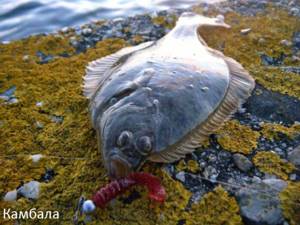
Among other baits that these predators bite well are:
- shellfish;
- shrimps;
- small pieces of squid and crab;
- pieces of fresh fish.
In addition, many fishermen use the following baits to catch predators:
- Maggot. A universal bait that is suitable for all types of gear. You should cover the hook using several maggots and enhance the attractiveness with various flavors.
- Red worm. The most suitable size is considered to be medium, and it is advisable to pierce only at one point so that the bait wriggles and attracts flounder. It is recommended to use flavoring additives other than those made with alcohol.
- A piece of red meat. This bait is considered catchable, and the use of fresh meat is not necessary; sometimes a product with a smell becomes more effective. You should choose pieces with fat that is attractive to a predator, and pierce them in one place.
- Canned foods. They are a tasty morsel for fish, but after a bite you should check for their presence.
- Dead small fish. The effectiveness of this bait is high, especially if it is from the same body of water. You should choose a small fish so that a predator can easily grab it without being afraid of a hook prick.
- Sea fish fillet. Such baits emit a smell that is more attractive to predators than the smell of freshwater fish species. The skin on the fillet should be left and strengthened additionally; the bait itself should be small in size.
- Twister. In areas with flat terrain, you can use a boat to tap the bottom. When fishing at night, it is recommended to use glowing bait using the scents of sea fish or worms. This method is effective when fishing close to shore when the water is calm.
- Pilker. They fish from a boat, tapping the bottom. The use of fragrances is recommended. The weight of the sinker is selected taking into account the bait and the depth of the reservoir.
Anchovy, salanka, and small bellyfish are well suited for catching large specimens. Popular artificial baits are spoons and sinking wobblers.
Tackle for catching flounder
Fishing from the shore
It is advisable to go fishing from the shore in the second half of autumn. The predator gets closest to the shores in November and December. It is optimal to choose gear for casting over long distances. Feeder-type rods with a length of more than 4 meters are suitable, on which you can attach heavy weights.
Experts recommend using gear with an additional protective coating in seawater, since the aggressive environment negatively affects the fishing rod:
- The fishing line is chosen with a diameter greater than 0.4 mm.
- The reel should be strong and reliable, allowing you to place about 150 meters of fishing line.
- The sinker should weigh at least 60 g, and hooks should be numbered 6-10. Depending on the place where fishing is carried out, the size of the sinker may vary, since waves and undercurrents often occur in the seas.
- The leash is made of fishing line, the diameter should be up to 0.25 mm. When choosing baits, you should pay attention to the brighter ones.
Fishing from a boat
Fishing by boat has a number of undeniable advantages:
- It is more convenient to monitor the fish.
- The fishing process is a little easier.
- Opportunity to go fishing at a convenient time of year.
- This way it is more convenient to look for places where fish accumulate.
When going out on the water with a boat, there is no need to take a long fishing rod. Basically, it is recommended to take the same equipment as for the shore, but choose less weight of the sinker.
Experts highlight the most convenient method of fishing - vertical. It is characterized by dipping the bait under the swimming device, and then tapping the bait on the bottom.
Thus, the bait forms muddy water and attracts predators. For more successful fishing, several fishing variations are used at once.
Equipment for fishing from a boat should be selected according to the following criteria:
- small rod;
- leash diameter up to 0.35 mm;
- sinker weighing 70-130 g;
- fishing line 0.6 mm thick;
- hooks numbers 9-13.
The best places for fishing for flounder
The predator lives in most large bodies of water. The flounder was discovered at a depth of 11 km in the Mariana Trench. At the same time, the Kerch Strait and the Baltic Sea are considered the most catchy places. The predator is found in the Azov and Barents Seas. On Sakhalin you can catch at least three types of fish. A rich catch awaits fishermen off Western Kamchatka and on the eastern coast of the Bering Sea.
Black Sea
In the Black Sea you can catch 3 types of flounder. The largest representative of the fish is the Kalkan, which grows to 17 kg or more, changing color as a camouflage. Also in the Black Sea there are gloss and sole (not to be confused with pangasius).
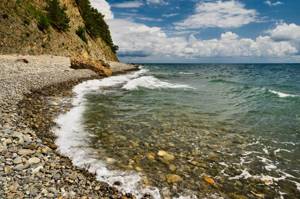
Black Sea
In Crimea, fish can be caught from a boat and from the shore all year round. In autumn, fish bite more actively.
Primorsky Krai
In Primorye, in particular in the suburbs of Vladivostok, it is easy to catch longnose and other species of flounder. To do this, you need to have a boat, find a bay and be patient. During the season (mid-May – end of June), fishermen rush to hunt for bottom fish, which they take out in “buckets”.
How to make your own tackle for flounder?
Due to savings, fishermen prefer to prepare their tackle with their own hands; to do this, you should know some rules. The process of making the gear is very simple and also does not require financial costs.
Tackle for flounder is made according to the following principle:
- Prepare a leash about 13-15 cm long.
- Hooks are attached to the leash.
- Several colored beads are placed on top of the hook.
- The leashes are placed on the rig with a distance of 20-30 cm.
- Carabiners are attached to the ends.
Let's celebrate! It is best to make several items for stock. For convenient use, they are hooked onto a reel. The final result is to connect the load and the main line, and the equipment will be completely ready.
Types of flounder
Predators are found in most seas and oceans. They can be fished with spinning rods or caught with nets on an industrial scale. Science has described more than 50 species of flounder, represented by 23 genera of this fish:
- Sharp-headed - Herzenstein and sharp-headed.
- Long – red, Steller’s smallmouth.
- Spiny - spiny and reliable flounder.
- Eopsetts - Grigoriev and Jordan.
- Arrowtooth – American and Asian (arrowtooth halibut).
- Halibuts - Japanese ruff flounder, Bering Sea flounder, northern halibut.
- Warty - warty.
- Halibuts are Pacific and Atlantic halibut.
- Polar - naked-headed.
- Oregonian.
- Two-colored and two-lined - northern two-lined, white-bellied.
- Smallmouths – smallmouth and Pacific smallmouth.
- Limanda - yellowtail, yellowfin, Sakhalin, long-snouted.
- Marine - yellow.
- River - star-shaped.
- Winter - Shrenka, yellow-striped, Japanese.
- Spotted.
- Hard-headed - horned.
- Dexists.
- Isopsets.
- Embassyhty.
- Parofries.
- Tanakius.
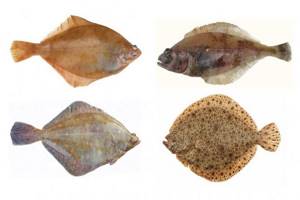
Types of flounder
The largest representatives of the listed flounder species are halibut. They are found in the Atlantic and Pacific oceans. You need to choose tackle for flounder depending on what species you plan to fish for.
Techniques and tactics for catching flounder
- It is recommended to cast the tackle further away, positioning the rod at a large angle. Some piers have special sides that are just right for a convenient position of the fishing rod.
- Flounder behaves especially when biting; it can grab prey and lie motionless for some time. If there was a long cast, then such a bite can be missed.
- It is important to carefully monitor the condition of the rod; a shudder will appear at the tip when the fish moves.
- They hook flounder quickly and confidently. Catching such a fish does not tolerate slowness. It should be remembered that flounder can actively resist. That is why, before pulling her towards you, it is advisable to tire her out.
- Flounders tend to swallow bait deeply; in this case, you need to have an extractor or hook with you.
- You will have to make some components of the equipment yourself. These include leashes; there should be at least 10 of them in stock.
- Fishing on a boat eliminates the need to take heavy weights. This is due to the fact that the rod does not need to be cast far.
- The boat uses vertical fishing techniques, alternating tapping on the bottom and small casts along with pulling up the equipment.
- The more powerful the tackle, the easier it is to pull out the flounder while fishing.
Fishing technique
Well, that’s all, now you can move on to the technique of catching flounder. So you arrived at the seaside early in the fall, standing in the middle of a deserted beach and shivering in the cold wind. What's next? Next, you should evaluate the strength of the waves, as well as the possible current, and select the appropriate weight of the sinker. As I said above, it should be a small cat so that it can hold the tackle in the current and waves. Then we bait and throw our tackle into the sea. If you have several tackles, then it is worth throwing them at different distances. For example, at 60 m, 35 m and 15 m, since the flounder can be located both near the shore and a little further into the sea. In most cases, you will not see a bite due to the long leader and choppy sea. And it’s difficult to keep an eye on three rods at once for a long time. Therefore, every 30-40 minutes you need to check the gear. If you haven’t seen any fish for several hours, you need to move to the right or left along the shore and try there. With patience, you will certainly get the result in the form of a flat fish on the hook. The flounder is not a strong enemy, but landing especially large specimens presents some difficulties.
That's all, I wish you a good time at the seaside.
No tail, no scales, good luck!
Share with your friends!
Reviews from fishermen
I prefer to catch flounder using a donkey. Instead of a sinker, I hook a heavy copper spoon into place between the hooks. Hooks are chosen thicker, preferably from number 10. On the modern market you can find special hooks for flounder, but I have not tried them, as I am used to mine. I use a variety of bait, I take worms, fish, squid or mussels.
Grade:
Vitaly 34 years old
I fish in Magadan very often. The last place was the central bay. I fished in the cold season, but the result is worth it. The fish are biting great. During the day of fishing, we managed to catch more than 20 individuals. Due to the fact that I hunted in the autumn, the fish pecked very vigorously and rushed to any bait. I was especially lucky with my lard catch. Grade:
Igor 38 years old
I prefer to catch flounder using a scallop. It holds the hook well and attracts attention. I don’t like to use meat and shrimp, since that’s the kind of food I like to eat myself. I consider capelin and herring to be good bait. In my opinion, the bait does not play the main role, it is the ability to use it that is important. Grade:
Konstantin 40 years old
At first, fishing for flounder seemed difficult to me, but gradually I learned how to catch this specimen and now I share my experience with everyone I know. I prefer to take a small spinning rod, a fishing line of about 7 m. I attach a sinker and several hooks to the end. You can look for bait as you go, since on the shore you can often find snails that are perfect for the role of bait. The fish attaches itself very quickly and every time you pull it out, a surprise awaits you, since it is impossible to predict the size of the individual.
Grade:
Vladislav 29 years old
Very often I go out fishing for flounder, as this fish attracts me not only with its special appearance, but also with its exquisite taste. From such a specimen you can make various dishes. Also, when fishing, you practice very well in the field of fishing, since pulling out a flounder to yourself is not always easy. Very often these fish bury themselves in the sand, so during the entire practice, several times I had to climb into the water and get the catch with my own hands.
Grade:
Nikolay 46 years old
Very often among fishermen you can meet true connoisseurs of sea hunting. Sea fishing is usually the way to catch flounder.
The process of catching this species is distinguished by the special behavior of the fish. That is why many people, when going on vacation to the sea, do not miss the opportunity to go fishing. When going hunting, the main thing to remember is the basic rules for a successful catch.
Where and when to catch flounder
Flounder fishing is very popular in coastal areas. This fish is successfully caught in the Black, Azov, Japanese and Baltic seas, that is, almost everywhere where there is access to the sea.

Flounder should be looked for under ledges, near reefs and offshore escarpments. Often this fish can be found in areas with a sharp change in depth.
Flounder is best caught in late summer and early autumn, when the predator is as close to the shore as possible and simplifies the fisherman’s task of finding it.
In spring and early summer, flounder stays at a decent distance from the shore - 3-10 km.
During the winter season, flounder shows virtually no activity.
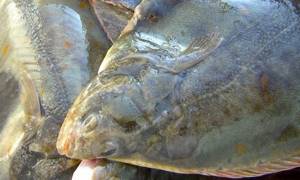
The best flounder bite is observed at night and early in the morning.
But in the daytime, flounder also bites, but not as actively as at night. There is also excellent bite after a storm.
Habitat and habits of flounder.
Flounder can rightfully be classified as a unique species of fish. This fish lives in almost all seas. In addition to its unusual flat body shape for fish, it has some other features that distinguish it from other fish. When flounder fry hatch from eggs, their eyes have the usual location, that is, like everyone else, on the right and left. During this period of life, it is at depth and its food consists of zooplankton. Later, the flounder sinks to the bottom. That's when one of her eyes begins to move to the side where the other eye is. At the same time, the fish’s bladder, with which it swam, disappears. From this moment on, the flounder lives on the bottom, that is, it leads a bottom lifestyle.
In addition, its unusualness lies in its method of movement. Flounder moves lying on its side from the moment it reaches sexual maturity.
The movement of the fins of this fish resembles the flapping of the wings of birds, therefore, looking at it, it seems that it is not a fish swimming, but a bird flying. Again, the body movements of the flounder when moving it are different from other fish. Typically, the body of fish bends from side to side, and in flounder it bends from bottom to top and vice versa.
Flounder can camouflage well by burying itself in the sand, with only the part of its head on which the eye is located remaining outside. The structure of the fish’s eyes is interesting: they can rotate in different directions, each in its own direction. This gives her the opportunity not only to observe the prey, but also to notice danger in a timely manner. Seeing an enemy, the fish stands on its edge, which helps to increase its speed of movement. If the flounder notices potential prey, it makes a sharp dash from cover.
Another interesting feature of this fish is that it can change color depending on the landscape around it and completely blend in with it. If there is a lot of algae around, her skin color becomes greenish. This quality also helps flounder to hunt and hide from danger.
Flounder feeds on small fish, crabs and small crustaceans, that is, it is a predatory fish. Based on their habitat, flounder is divided into two types: river and sea. It can be found in the seas and at the mouths of rivers, where they flow into the sea.
There are three species of this fish in the Black Sea: the largest is the Black Sea Kalkan, which is commercially available, which does not prevent flounder lovers from hunting for it too. It is the kalkan that is capable of mimicking, that is, changing color, masquerading as the color of the environment. Some individuals of the Kalkan reach fifteen kilograms and have no scales.
There are also two species of flounder living in the Black Sea: sole and glossa. These are not commercial fish, but are quite suitable for amateur fishermen. There is an opinion that glossa is found only in fresh water, but this is wrong. Glossa enters both rivers and estuaries, it can travel hundreds of kilometers and, nevertheless, it belongs to the sea fish. And to the family, the same as halibut - the largest fish of the flounder.
The best fishing for flounder is considered to be in the area of Cape Tarkhankut and in the Kerch Strait. And also at the mouth of the Dniester and Dnieper.
There are also three types of flounder in the Sea of Azov: kalkan, sole and glossa. Glossa is a river flounder. At night it bites much better than during the day, but this does not prevent you from catching flounder at other times of the day.
Fishing Features
A semi-enclosed body of water in northeastern Europe. The sea has several outdated names, the ancient Russian one being Varangian.
A small part of the Baltic is adjacent to the Russian Federation, these are the Curonian and Kaliningrad Lagoons in the Kaliningrad Region, as well as the easternmost part of the Gulf of Finland in the Leningrad Region. The Baltic Sea occupies a significant area of 415 thousand km², excluding islands.
It is an inland sea of Eurasia and belongs to the Atlantic Ocean basin. The sea washes the shores of several Northern European countries: Estonia, Latvia, Lithuania, Poland, Germany, Denmark, Sweden and Finland and, partly, Russia.
The sea area has a complex shape, the main part is oriented to a greater extent from north to south. The northernmost point is located near the Arctic Circle off the coast of Sweden, the southernmost point is near the city of Wismar (Germany).
The easternmost one is near St. Petersburg, and the western one is in Germany, in the region of Flensburg. The length of the coastline is approximately 8000 km.
The Baltic Sea is considered not deep, the average value is about 51 m, with a maximum of 470 m.
The coastline is heavily indented; various forms of relief abound along its entire length: bays, bays, capes, peninsulas, etc. There are a large number of large and small islands in the Baltic Sea.
In general, a significant part of the sea is a collection of several large bays adjacent to the central part of the sea and the area of the Danish Straits connecting the Baltic with the North Sea.
Three bays: Bothnian, Finnish and Riga account for almost half of the sea surface area. The islands are located both separately and grouped into archipelagos.
The size of the islands varies greatly. The largest ones include: Bornholm, Gotland, Zealand, Lolland, Langeland, Mön, Rügen, Saaremaa, Femarn, Funen, Falster, Hiiumaa, Öland.
Depending on their geographical location, they belong to different states.
The relief of the Baltic Sea coast has some differences in relation to the northern and southern parts. The northern coasts are more characterized by strong dissection, the presence of a large number of rocky outcrops in the form of capes, skerries, bays, etc., as well as relative forest cover with coniferous trees.
The southern part is flatter, sandbanks predominate here, chains of dunes stretch for many kilometers along the coastline, and sandbanks and spits protrude into the water. At the mouths of rivers, sand spits can form numerous desalinated areas in the form of lagoons or bays, such as the Curonian or Vistula.
In addition, it is worth noting that in the southern part there is a certain degree of swampiness in the coastal zone, along with the steepness of some sections of the flat coast.
The Baltic Sea is located in the continental shelf zone. The depths, as already mentioned, are small.
The deepest part is the Landsort Basin (470 m), located off the coast of Sweden, north of the island of Gotland. The seabed is covered with sandy and silty sediments; in some areas rocky sediments may predominate.
Along the coastline, as a rule, the bottom is covered with sand. The Baltic Sea is subject to tidal activity, but it is small (about 20 cm).
At the same time, the state of the water level is largely influenced by surge phenomena, during which fluctuations in the water level can reach more than 2 m. Wave phenomena in the Baltic, in comparison with other seas, are relatively small, under certain conditions, up to 4 m.
Although in some cases, during storms, a wave height of about 11 m was recorded.
Due to the unusual living conditions, where both freshwater and marine representatives of ichthyofauna can live equally, a very diverse fishing is possible here. Despite the fact that the species composition of Baltic fish is somewhat lower than is usually expected in the seas, this deficiency is more than compensated for by the abundance of species popular among amateur fishermen.
Almost all fishing methods are popular in the Baltic Sea, both from the shore and from ships. Among them, it is worth highlighting trolling, which is practiced when catching pike perch or Baltic salmon.
An important factor that influences the popularity of fishing in the Baltic is the extensive network of resorts, recreation centers, guest houses, etc. Local residents offer a wide range of services and professional assistance in organizing fishing and recreation.
The population of all the Baltic regions has been organizing holidays for visitors for a long time; they are distinguished by their cordiality and hospitality, and most importantly, by a high level of service.
Lures
Flounder is not a very fastidious fish in terms of choosing bait, so catching flounder in Primorye may not be much different from hunting for it in the Black Sea.
Any sea mollusks that live in a particular region, shrimp, pieces of crab or squid, chopped fresh fish, sea worm - Nereis and many others can be used as bait Moreover, the necessary bait can be obtained directly at the fishing site.
Fans of spinning fishing can try to catch flounder using artificial baits - weighted spoons - jigs, sinking wobblers and others. If you have a boat, you can catch flounder with a vertical lure.
Food and bait
Due to the original body structure, flounder has adapted to a bottom lifestyle. The body allows this fish to take the shape of the bottom relief and burrow into the ground, and some species are able to change the color of their upper side. Thus, wherever the flounder lies at the bottom, that’s where its ambush will be.
The food of this predator includes almost everything that can be found in the bottom layer:
- crustaceans;
- shellfish;
- worms;
- small fish.
In general, this predator is not very picky about what it eats and will bite on almost anything that moves. The main thing for an angler to catch this fish is to deliver the bait to its nose.
The following is used as bait for catching flounder:
- mussel meat;
- squid meat;
- anchovy;
- shrimp;
- small bull;
- fish fillet;
- sea worms - neris, sandworm and others.
This is not all that you can use to catch flounder; in fact, it is omnivorous and carnivorous, but sometimes it behaves finicky and requires experimentation with bait.
On the lower side of the Black Sea flounder kalkan there are spines, which, if handled carelessly, can seriously injure the fisherman’s hands.
